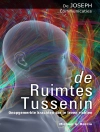Nowadays, you and I are in the midst of AI, big data, multimedia, gossip, rumors, materialistic desires, and the great trend of the times.In the midst of the confusion and material satisfaction caused by complicated and novel things, have you ever thought about examining life with a reflective attitude and taking a careful and quiet look at life, the apparent convenience and innovation of technological civilization, but deepening the hidden nature of life that is hard to erase and sad and miserable at the bottom of our habitual thinking?
If human life is like a special, unusual, significant and far-reaching key, every morning when you wake up to take it, you have to fill out the application form carefully and seriously, without being meticulous.
Before going to sleep at night, thank God for today’s gift and return the key to life with gratitude.
If we have used the key of life thousands of times, over and over again, then why do we have to do as Sisyphus did, with great effort, to push a boulder up a mountain?
After pushing a boulder up to the top of the mountain, we let it roll back down again, and so on, day after day, applying and repeating forever. ……
Imagine when we return the key to life, do we take an introspective attitude and examine our life deeply: what have we achieved today? What have we failed?
So one cannot help but ask: which direction should we choose for the existence of the universe and life itself, and what lifestyle should we adopt?
What is the value of the existence of life itself, and what is the true meaning of the existence of life itself?
What if the days of our existence in the universe, in life itself, always begin under such hard-won circumstances?
If our cosmic life existence, our existence itself, has always started in such a hard way and ended in such a sad way, then we must have a deeper self-awareness and reflection on our cosmic life existence, our existence itself.
Therefore, the question of life and death will again become a sharp and sensitive issue.
The Eastern and Western philosophies of life have, for ages, attempted to unravel the mystery of life and death in the existence of everything in the universe itself, in order to understand the true meaning of the existence of the world around us.
They attribute life to the simple ‘existence’ that distinguishes between animals and inanimate things, and to the ‘mind’ that is uniquely human.
It even goes on to use the phenomena that differentiate everything from one generation to another and the various theories that explain these phenomena, in order to decipher the existence of life in the universe.
To decipher the knowledge and culture inherent in the existence of life in the universe. It serves the purpose of the existence and evolution of a certain kind of being itself.
However, ‘mind’ is a sum of the ability to realize the motive by the biological reaction of people through the precipitation and storage of known things.
It is the sum of all the thinking abilities to feel, observe, understand, judge, choose, remember, imagine, hypothesize, and reason, and then to guide their behavior according to it.
Thus, ‘mind’ covers the ‘philosophical’ level: the accumulation and storage of the known (subconscious); combined with the ‘biological’ (consciousness) level of brain information processing, that is, ‘physiological response’.
The ‘mental’ activity that engages in the conscious effort to achieve a certain ideal or purpose, thus consciously defining the purpose, is applied to the mental state.
Tabela de Conteúdo
Table of Contents
Preface
◇Part 1: Existence and Nothingness◇
Section 1: Background and Origin of Scharthe’s Thought
Section 2: Overview
(1) Criticism of Husserl’s Phenomenology
(2) Critique of Hegel’s Dialectic
(3) Critique of Heidegger’s Theory of Existence
Section 3: Exploration of the scope and main idea of the pursuit and research
1. Absolute – the view of uniqueness
2. Relativity – There is no ‘absolute reference system
3. A form of thinking that reflects the nature of things
4. Relative rhetorical devices of language
Section 4: The truth, the purest, most consistent with the actual truth
1. Truth that is unique in nature
2. Truths that are opposed to each other in nature
3. The quality of arbitrariness
4. Relative truth is knowledge
Section 5: The position based on which problems and issues are analyzed or criticized
◇Part 2: ‘Existence and Nothingness’ works ideas◇
Section 1: Phenomenological Monism Replaces Philosophical Dualism
(1) ‘Being-for-itself’ and ‘being in itself
(2) Emptiness and self-deception
(3) The Phenomenology of Three-Dimensional Time
(4) Human existence and freedom
Section 2: Introduction.
(1) The concept of phenomenon.
(2) Apparent ontology.
(3) The Phenomenon of Ontology and the Divide of Being
Section 3: The Presence of the Self and Perception before Reflection
(1) Consciousness must be aware of something.
(2) Existence of the perceived object
(3) The collapse of traditional beliefs and the passion that man is useless
(4) I love the anxiety that cannot be satisfied by clinging
Section 4: Ontological Proof
1. Connotation of Ontology
2. Unitarianism and Pluralism
3. Materialism and idealism
4. ‘being in itself’
Section 5: Philosophical irrationalism that explores the meaning of human existence
01. Definition
02. Existence before essence
03. absurdity
Section 6: What Existentialism Wants to Achieve. (1) Confrontation
(1) Confrontation with essentialism, holistic philosophy, and static metaphysics.
(2) Kant’s a priori turn
Section 7: The actual existence of freedom as
01. Existence in oneself
02. Being for oneself
03. Consciousness and Nothingness
04. The way of existence of ‘in oneself’ and ‘for oneself
◇Part 3: The structure of Sartre’s theory of existence.◇
Volume 1: ‘Nothingness’, an analysis of ‘self-deception’; an argument for nothingness, and an incisive analysis of self-deception.
Section 1: Nihilism in Philosophy
Section 2: The Concept of Essentialism
Section 3: What is the nature of consciousness?
Section 4: Consciousness, subconsciousness or unconsciousness.
Section 5: Consciousness from the Objective Material World
Volume 2: ‘Being-for-itself’, ‘Time’-‘Holism
Volume 3: the relationship with ‘others’, the idea of ‘co-presence’.
Volume 4: Possession, Acts and Existence, the relationship between ‘acts of being’ and ‘freedom’.
Conclusion: A metaphysical conclusion is drawn on the relationship between ‘Self-being’ and ‘Self-activity’.
1. The main philosophical thinking of Saudi Existentialism
2. A metaphysical conclusion to the whole book.
References












